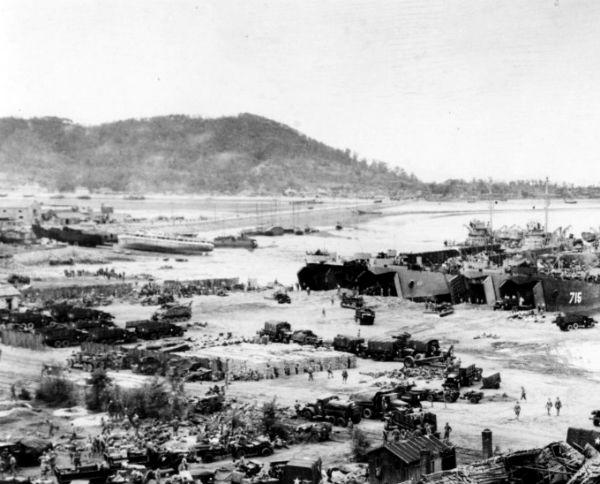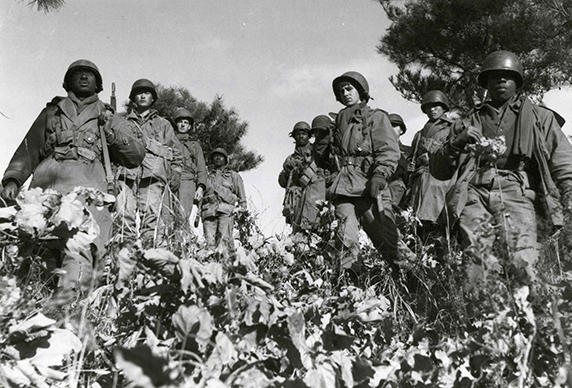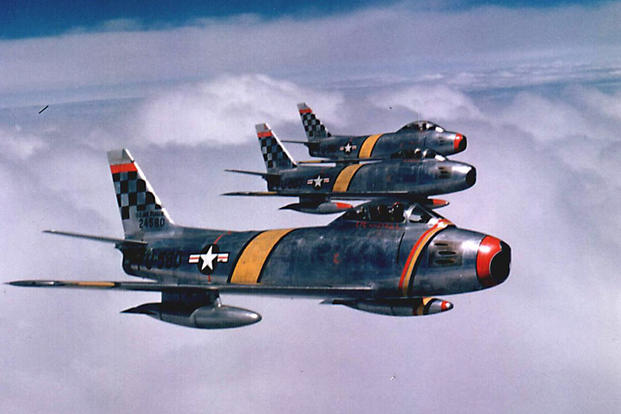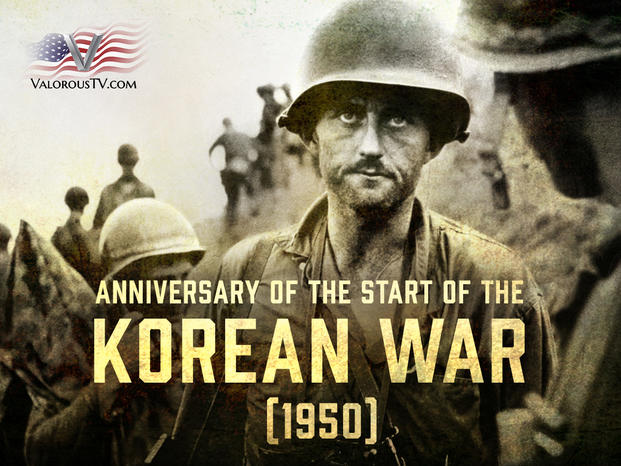In June 1950, President Harry Truman ordered a naval blockade of the Korean coast and authorized Gen. Douglas MacArthur to send U.S. ground troops into Korea. During the three-year war, history would repeatedly be made. From the amphibious landing at Inchon to the first time jet aircraft engaged in battle, here are six historical moments of the Korean War.
1. Amphibious Landing at Inchon

With U.S. and United Nations forces locked in the struggle to break out from the Pusan Perimeter, Gen. MacArthur put in place what was perhaps the most remembered aspect of the Korean War: The amphibious landing at Inchon. The operation's codename was Operation Chromite. The 5th Marine Regiment landed on Wolmi-do Island in Inchon Harbor on Sept. 15, 1950, with the balance of the 1st Marine Division landing at Inchon. By late the next day, American forces had overwhelmed the North Koreans and secured the city, allowing MacArthur to land the balance of the invasion force and to move on to retake Seoul the following March.
2. The Largest Naval Blockade in History
Naval forces created what was to become the largest naval blockade in history off the strategically vital Wonsan harbor on North Korea’s east coast. U.N. forces, including the 1st Marine Division, captured Pyongyang on Oct. 19, 1950.
3. The Chosin Few

The Marines' breakout from the Chosin Reservoir started with the savage battle of East Hill, with the 5th and 7th Marines attempting to rescue the surrounded 7th Infantry Division’s Regimental Combat Team. The Marines eventually formed up into a single column and began the fight through the Chinese Army encircling their positions. The breakout battle was fought in some of the most difficult and roughest terrains in Korea, and some of the harshest winter weather conditions with temperatures plunging to -35 F.
The tenacity and fortitude of the Marines during the running battle kept the Chinese from pushing forward and overrunning the U.N. Corps south of Chosin. The embattled column reached the U.N. forces' main perimeter on Dec. 11, bringing the Chosin Reservoir breakout to a close. The 1st Marines Division received the Presidential Unit Citation for its actions, as did the 41st Royal Marine Commando and the Army’s RCT-31. Fourteen Marines (along with two U.S. Army service members and a Navy pilot) were given the Medal of Honor, and all who served in the campaign became known as ‘The Chosin Few.’
4. The First Time Jet Aircraft Engaged in Battle

When the Korean War broke out, many of the aircraft initially used by the U.S. military were World War II prop-driven planes, including the B-29 Superfortress bomber and the Mustang fighter with the Navy and Marines flying the vaunted Corsair fighter. The attacking North Korean forces had Soviet-built jet fighter MiG 15. The U.S. rapidly deployed the F-86 Sabre jet, marking the first time U.S. jet aircraft engaged in battle. In fact, Korea was the first time the United States Air Force entered into combat, as it was created as a separate and independent force in September 1947.
The Air Force F-86, the Navy Panther jets and the Marines in the Corsair supported the heavy bombing campaigns against North Korea. This led to many dogfights in the northwest part of North Korea dubbed "MiG Alley." By the end of hostilities in 1953, the F-86 had shot down 792 MiGs with a loss of 76 Sabre jets, for a victory ratio of 10-to-1.
5. Greatest Evacuation in US Military History

Historians call the evacuation from Hungnam in North Korea in December 1950 “the greatest evacuation movement by sea in U.S. military history.” A 193-ship armada assembled at the port and safely evacuated the bulk of the forces in eastern North Korea. In two weeks, more than a hundred thousand military personnel, 17,500 vehicles and 350,000 tons of cargo were pulled out to safety; 91,000 refugees were also evacuated safely. The military units evacuated included the 1st Marine Division, which arrived at Hungnam after its successful fighting withdrawal from the Chosin Reservoir area.
6. General MacArthur Fired

The South Korean capital of Seoul was a major battleground during the Korean War, with the North taking it twice and the U.S and U.N. forces retaking the city each time. The fourth battle of Seoul, planned by U.S. 8th Army Commander Matthew Ridgway, was intended to destroy as much of the North’s military forces around Seoul and also to move the U.N. troops back to the 38th parallel. The operation began in March 1951, and by mid-month, the North’s forces had been forced to withdraw from Seoul, and the U.S. military retook the city. This would be the last time the capital changed hands.
Meanwhile, the controversy over policy issues regarding the conduct and scope of the war was building between Gen. MacArthur, the supreme commander in Korea, and President Harry Truman. On April 11, 1951, Truman relieved MacArthur, with Gen. Ridgway elevated to the supreme commander’s post in Korea.
In July 1953, the Korean War ended. In all, some five million soldiers and civilians lost their lives during the war. Because no permanent peace treaty has ever been signed, ‘the unfinished’ or ‘forgotten’ war still divides Korea today.
Watch First To Fight on ValorousTV.com, an in-depth 12-episode journey through the Korean War.
Valorous TV is also available on Amazon Fire TV and Roku.
Want to Know More About the Military?
Be sure to get the latest news about the U.S. military, as well as critical info about how to join and all the benefits of service. Subscribe to Military.com and receive customized updates delivered straight to your inbox.















